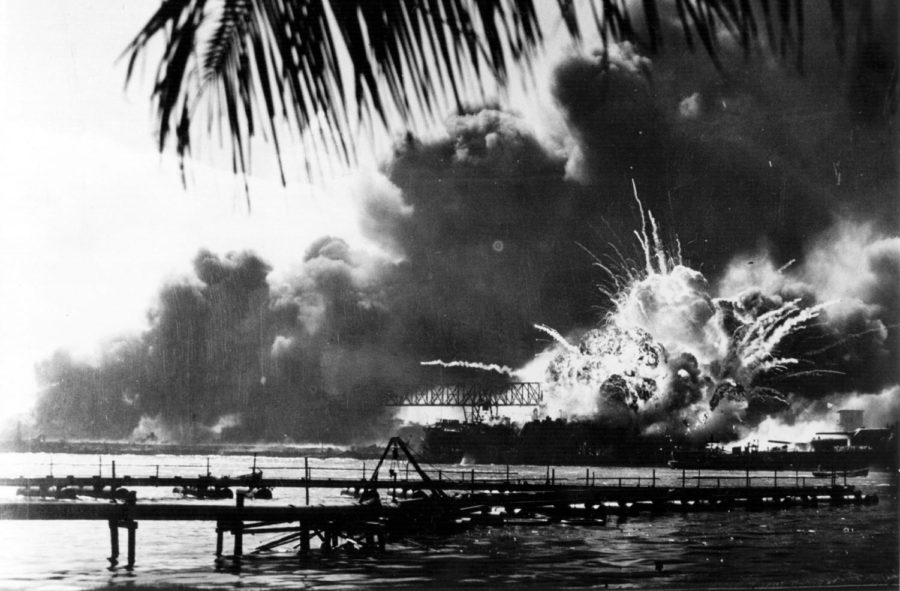A Date That Will Live in Infamy
Today In History December 7th
December 4, 2017
On December 7, 1941 at 7:55 a.m. Hawaii time, a Japanese dive bomber bearing the red symbol of the Rising Sun of Japan on its wings appeared out of the clouds above the island of Oahu. A swarm of 360 Japanese warplanes followed, descending on the U.S. naval base at Pearl Harbor in a ferocious assault. The surprise attack struck a critical blow against the U.S. Pacific fleet and drew the United States irrevocably into World War II.
It was Sunday morning, and many military personnel had been given passes to attend religious services off base. At 7:02 a.m., two radar operators spotted large groups of aircraft in flight toward the island from the north, but, with a flight of B-17s expected from the United States at the time, they were told to sound no alarm. Thus, the Japanese air assault came as a devastating surprise to the naval base.
Shortly after this event, Franklin D. Roosevelt provided a speech, known as the “date that will live in infamy” in which FDR called for a declaration of war against the Japanese. This moving speech led to Congress to declare war that same day.
Even as World War II was ending 70 years ago, Americans already knew it had transformed their country. What they didn’t know was just how much or for how long. In the wartime summer of 1945, the seeds of a new America had been sown. Not just postwar America — the Baby Boom, the Cold War, the Affluent Society, the sprawling suburbs — but the one in which we live today.


